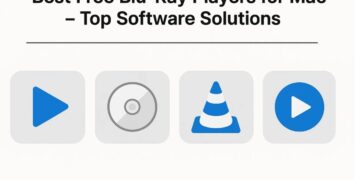Image from Unsplash
The landscape of e-commerce is evolving, fast. What started as a transactional model focused solely on product sales is now shifting toward a more holistic ecosystem approach. Today’s most successful brands are no longer just merchants. They are educators, mentors, and platforms that build communities.
One example of this shift can be seen in PLA Pro. Originally known for high-quality lash and beauty tools, the company has expanded far beyond traditional product offerings. Through in-depth training programs, business-building resources, and a community-driven model, PLA Pro exemplifies how modern e-commerce thrives not just on what you sell—but on what you teach.
This isn’t an outlier trend. Across industries, consumer expectations are shifting. People don’t just want to buy—they want to learn, engage, and grow. In 2025 and beyond, brands that educate will outperform brands that only transact.
Why Selling Products Alone No Longer Works
E-commerce has exploded in the last decade, but so has competition. With the rise of drop-shipping, global suppliers, and low-barrier-to-entry platforms, almost anyone can launch a product in days. As a result, differentiation is harder than ever.
What sets modern brands apart isn’t necessarily price, speed, or even design—it’s value beyond the product.
Today’s consumers expect:
- Context: How do I use this product?
- Credibility: Why should I trust this brand?
- Connection: Who else is using this, and what’s their experience?
When brands become educators, they’re not just selling an item—they’re solving a problem, empowering a user, and building long-term trust. That emotional connection translates into higher retention, stronger referrals, and higher average order value.
The Rise of “Edutainment” Commerce
A scroll through TikTok or Instagram reveals the most successful brands aren’t pushing products—they’re delivering insights, tutorials, or stories.
Beauty creators explain techniques. Fitness brands offer mini-workouts. Kitchenware companies show recipes.
This model—commonly referred to as “edutainment commerce”—blurs the line between influencer content and business strategy. Brands now act like creators, and creators act like brands.
Digital presence includes:
- Step-by-step lash tutorials
- Educational product breakdowns
- Insider guidance for aspiring beauty professionals
This kind of knowledge-sharing does more than attract clicks—it builds credibility and creates an onboarding path for new customers who feel supported, not just sold to.
Why Education Builds Better Brand Loyalty
Image from Unsplash
It’s one thing to acquire a customer—it’s another to keep them coming back. Educational ecosystems are incredibly effective at nurturing that loyalty.
Here’s why:
- Empowerment creates confidence. When customers feel equipped, they’re more likely to use the product consistently—and tell others about it.
- Education signals authority. Brands that teach are viewed as leaders in their field. That trust translates into premium positioning.
- Learning journeys are sticky. A customer might engage with a brand for months via content before ever making a purchase. Once they do, they’re already “bought in” emotionally.
According to a study by the Harvard Business Review, companies that invest in educating their users create more resilient, adaptable business models. Learning-based ecosystems aren’t just more profitable—they’re more future-proof.
Product vs. Platform: Understanding the Shift
Traditional e-commerce brands center on the product. They ask:
“How can we sell this item faster and more efficiently?”
Platform-style e-commerce brands ask:
“How can we become the go-to resource for this audience?”
PLA Pro, for example, doesn’t simply provide beauty tools. It provides:
- Training for lash artists and estheticians
- Resources for building a solo business
- Content that fosters a professional community
That shift—from seller to ecosystem—turns a one-time customer into a recurring, loyal user. And it opens the door to recurring revenue models: memberships, courses, subscriptions, certifications.
In this model, the product becomes a gateway, not the endpoint.
The Economics of Education-Driven E-Commerce
From a business perspective, teaching pays off. Here’s how:
1. Higher Lifetime Value (LTV)
Educated users are more confident, committed, and curious. They’re more likely to buy again, explore upsells, and remain loyal longer.
2. Lower Customer Acquisition Cost (CAC)
Organic traffic from how-to content and educational videos often reduces reliance on expensive ad campaigns. And users are warmer when they arrive.
3. User-Generated Content (UGC)
When customers learn something, they love to share it. Tutorials, transformation stories, and community feedback become a flywheel for brand growth.
4. Expansion Opportunities
Teaching opens the door for product diversification. Once you train someone in a skill, you can offer advanced tools, accessories, or digital products tailored to their evolving needs.
Industries Where This Is Taking Off
Image from Unsplash
While beauty is leading the way, many sectors are embracing the product-to-platform shift:
- Wellness and fitness: Brands now offer health programs, courses, and coaching alongside supplements or gear.
- Crafts and DIY: Yarn companies teach knitting. Leather suppliers offer tutorials.
- Tech gadgets: Device makers provide extensive onboarding, productivity hacks, or troubleshooting content.
- Food and beverage: Specialty ingredient brands now provide recipes, cooking classes, and cultural background.
In every case, the educational layer creates depth and differentiation.
Challenges to Consider
Of course, education-driven commerce isn’t without challenges:
1. Content Quality Matters
Poorly produced or confusing content can hurt a brand more than help it. If you’re teaching, you must do it well—with clarity, purpose, and structure.
2. It’s Resource Intensive
Developing tutorials, courses, or support materials takes time, especially if it includes video or live elements. Smaller brands must balance ambition with capacity.
3. Not Every Customer Wants to Learn
Some customers just want the result, not the process. Offering both “fast path” and “deep dive” options ensures you meet all preferences.
Tips for Transitioning from Product to Platform
Thinking about adding an educational layer to your e-commerce brand? Start here:
- Identify your customers’ biggest pain points
What questions do they ask most often? - Create content around those questions
This could be a blog post, short video, or downloadable guide. - Use learning to build trust, not just promote
Aim to solve, not sell. - Invite engagement
Build forums, live Q&As, or social groups to strengthen the ecosystem. - Monetize when appropriate
Once value is proven, offer paid training, memberships, or certifications.
The future of e-commerce won’t be defined by the flashiest store or the fastest shipping—it will be defined by the deepest connection. Brands that move beyond the transaction and into transformation—by educating, empowering, and uplifting their audience—will lead the next generation of digital commerce.
As platforms like PLA Pro have shown, teaching isn’t just generous—it’s strategic. In 2025 and beyond, education will be the most valuable product a brand can offer.













